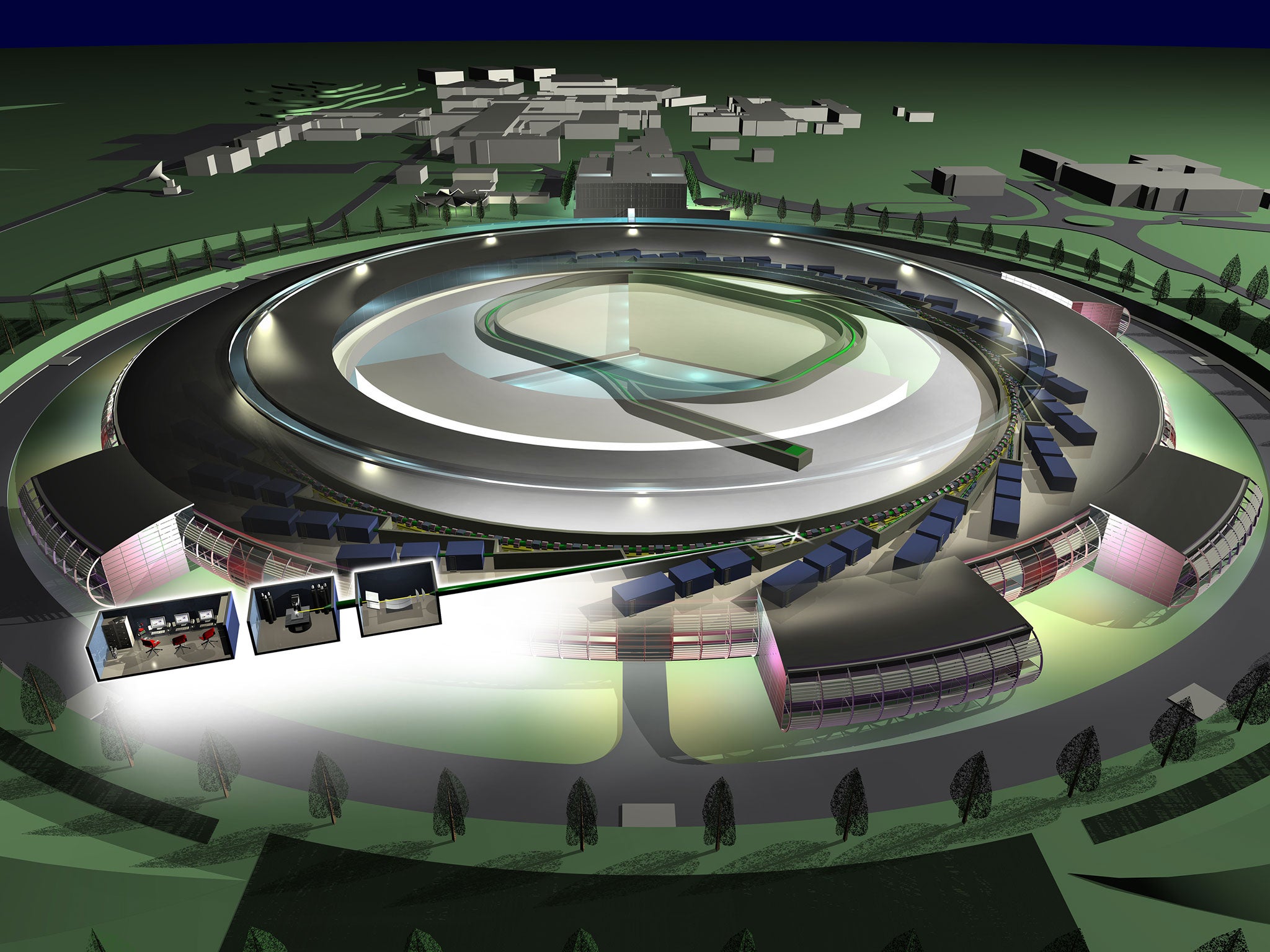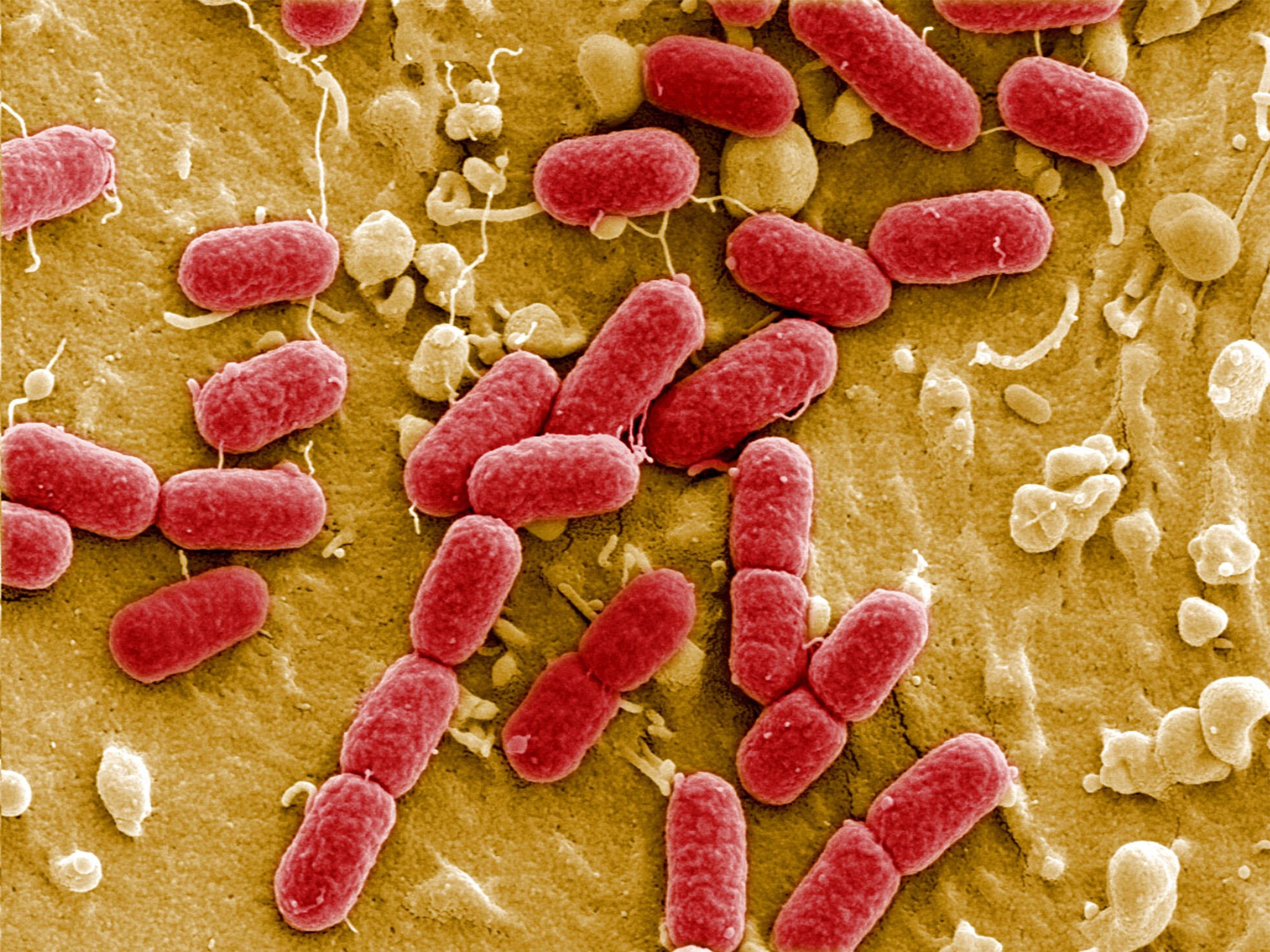Diamond Light Source: Giant microscope could help find out how bacterias are able to resist antiobiotics, scientists say
'It paves the way for developing new-generation drugs'

A new generation of antibiotics could emerge from a study revealing the hidden Achilles’ heel of many drug-resistant superbugs, scientists said.
Powerful light beams many millions of times brighter than the Sun have for the first time taken detailed images of the complex, molecular structure that helps to build the protective cell wall of disease-causing bacteria.
Researchers believe that understanding how this molecular machinery is arranged at the atomic scale within the bacterial cell wall holds the key to developing new kinds of antibiotic drugs that can breach the outer defences of resistant microbes.
The study revealed how the structure, known as the beta-barrel assembly machinery (BAM), is made up of five protein subunits that work together to build the protein gateways of the bacterial cell wall, which allow vital nutrients to flow into the microbial cell.
The BAM machinery is found in all “gram-negative bacteria” – a class of microbes that causes a range of potentially lethal infections from pneumonia and meningitis to blood sepsis and food poisoning. Antibiotic resistance is a particular problem with gram-negative bacteria.
By mapping the three-dimensional positions of the five BAM subunits, scientists believe they have finally found a way of understanding how to block the machinery that builds the cell wall’s gateways, and in doing so starve the microbe of vital nutrients.

Scientists said the findings pave the way for a new generation of drugs that kill superbugs by tearing down their defensive walls rather than attacking the bacteria itself. This approach might even prevent the development of further drug-resistance, they added.
“Bacterial multi-drug resistance, also known as antibiotic resistance, is a global health challenge. Many current antibiotics are becoming useless, causing hundreds of thousands of deaths each year. The number of superbugs is increasing at an unexpected rate,” said Professor Changjiang Dong of the University of East Anglia in Norwich, who led the study published in the journal Nature.
“Gram-negative bacteria are one of the most difficult ones to control because they are so resistant to antibiotics. All gram-negative bacteria have a defensive cell wall. Beta-barrel proteins form the gates of the cell wall for importing nutrition and secreting important biological molecules,” Professor Dong said.
“The beta-barrel assembly machinery (BAM) is responsible for building the gates – the beta-barrel proteins – in the cell wall. Stopping the beta-barrel assembly machine from building the gates in the cell wall cause the bacteria to die,” he said.
Unravelling the BAM mechanism could also help to understand human cell dysfunctions linked to disorders such as diabetes, Parkinson's and other neurodegenerative diseases, Professor Dong said, as similar molecular machinery is also found in the cell membranes of human mitochondria – the microcopic “power packs” of the cells.
“In human mitochondria, a similar complex called sorting and assembly machinery (SAM) is responsible for building the outer membrane proteins in the outer membrane of mitochondria,” he said.
“Dysfunction of mitochondria outer membrane proteins are linked to disorders such as diabetes, Parkinson’s and other neurodegenerative diseases, so we hope that this work may also help us to better understand these human diseases too,” he explained.
Intense light beams, some 10 billion times brighter than the Sun, produced by the Diamond Light Source in Oxfordshire were used by the scientists to explore the atomic detail of the bacteria’s machinery for making the vital gateways of its own cell walls. The study showed how BAM’s five subunits – BamA, BamB, BamC, BamD and BamE – are assembled into a working, sub-microscopic machine for inserting protein gateways in the outer wall.
“Our research shows the whole BAM structures in two states – the starting and finishing states. We found that the five subunits form a ring structure and work together to perform outer membrane protein insertion using a novel rotation and insertion mechanism,” Professor Dong said.
“Our work is the first to show the entire BAM complex. It paves the way for developing new-generation drugs. The beta-barrel assembly machinery is absolutely essential for Gram-negative bacteria to survive. The subunit BamA is located in the outer membrane and exposed to the outer side of the bacteria, which provides a great target for new drugs,” he said.
Diamond Light Source
The Diamond Light Source in Harwell, Oxfordshire, is one of the most advanced scientific machines in the world. It produces high-energy beams of electromagnetic radiation – X-rays, infrared and ultraviolet light – that are so powerful they can probe deep into the basic structure of matter and materials.
These highly-focussed beams of synchrotron radiation can reveal atomic-scale structures of anything from crystals to viruses, and are helping scientists to answer fundamental questions about everything from the building blocks of life to the origin of the stars and planets.
Synchotron light is the electromagnetic radiation emitted when electrons, moving close to the speed of light, are forced to change direction under the influence of a magnetic field.
Join our commenting forum
Join thought-provoking conversations, follow other Independent readers and see their replies
Comments
Bookmark popover
Removed from bookmarks